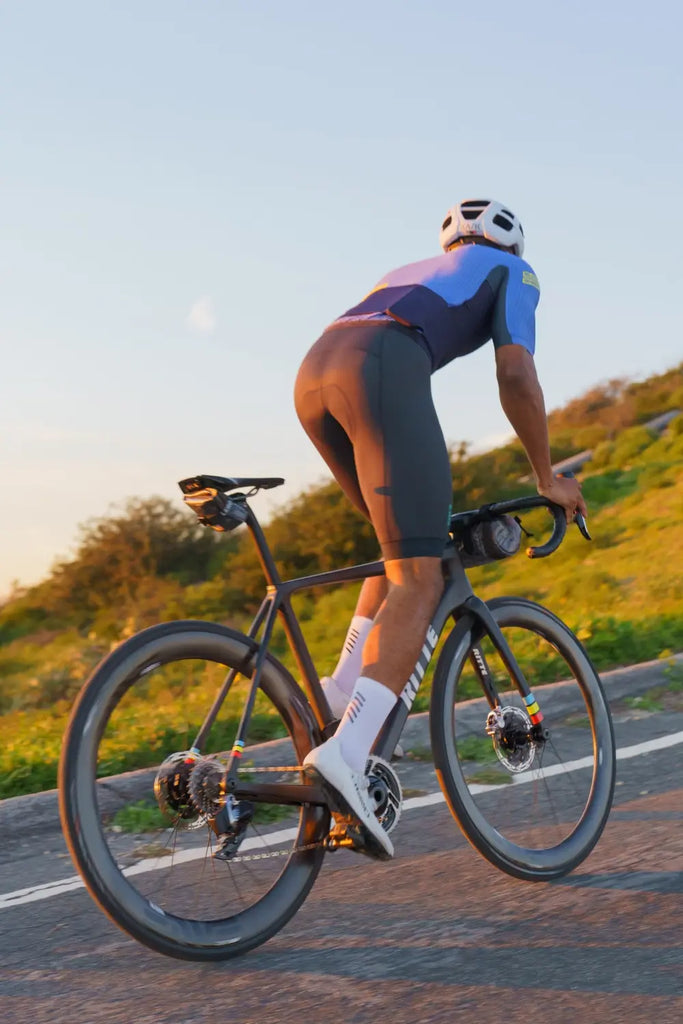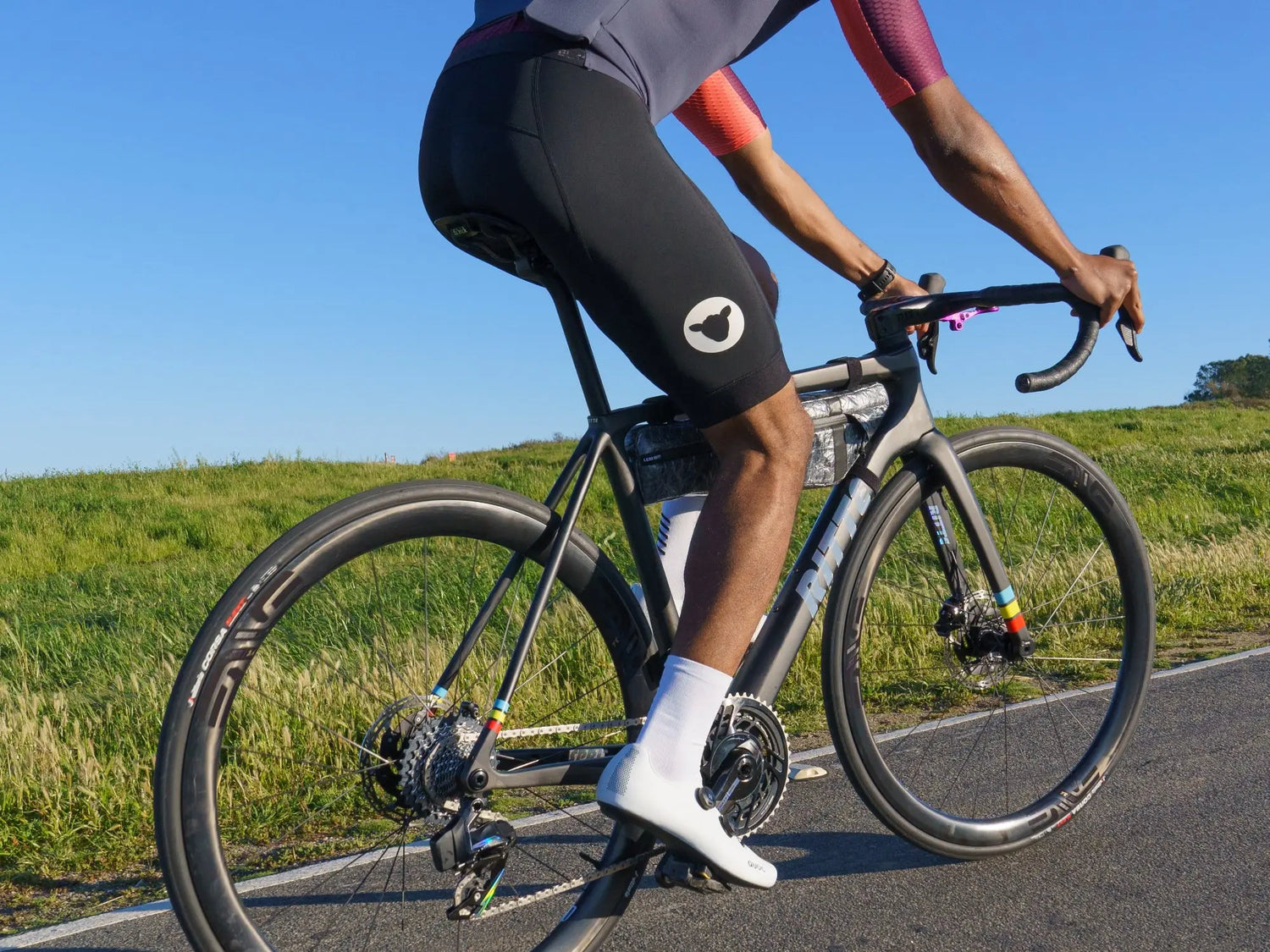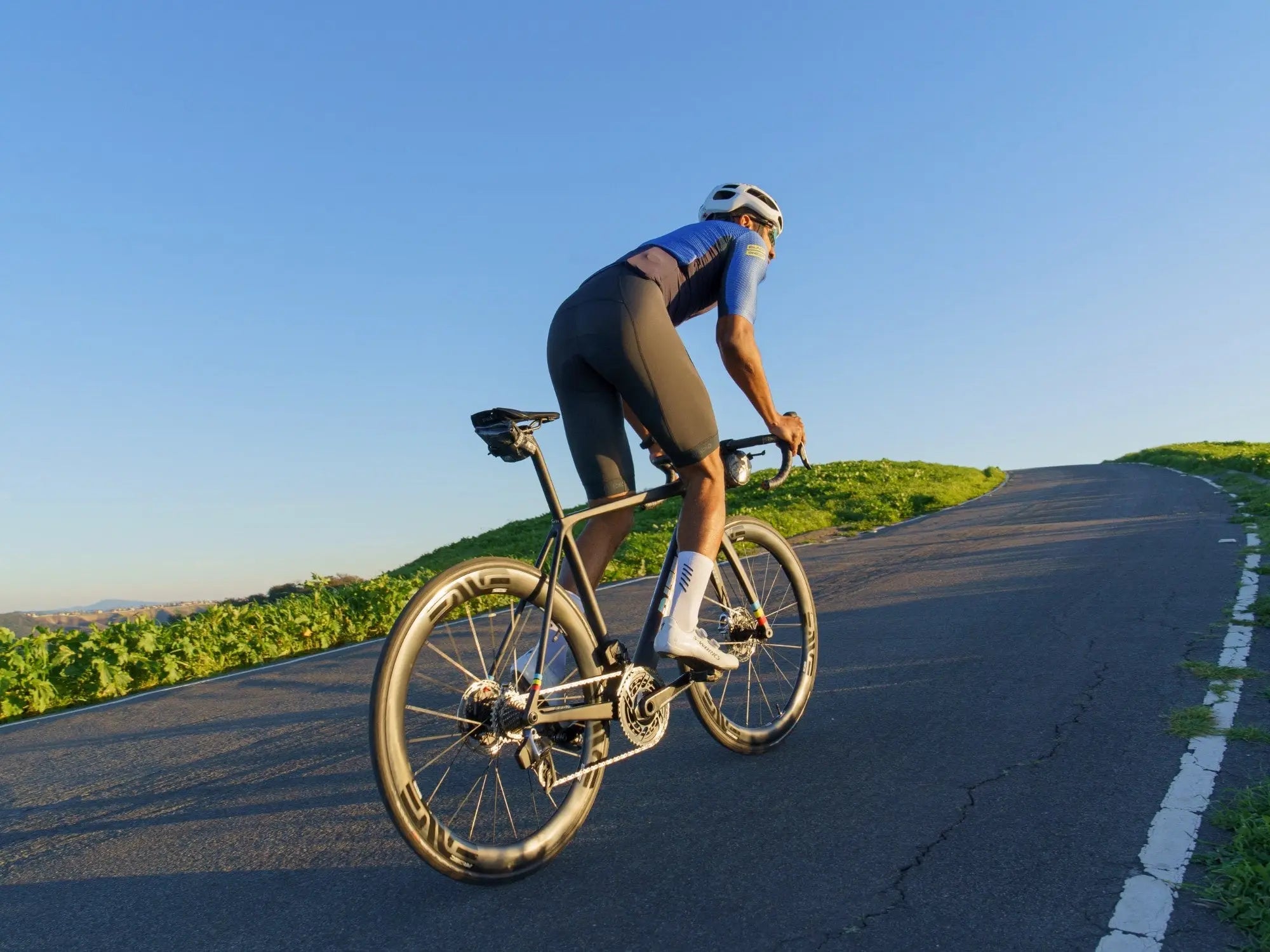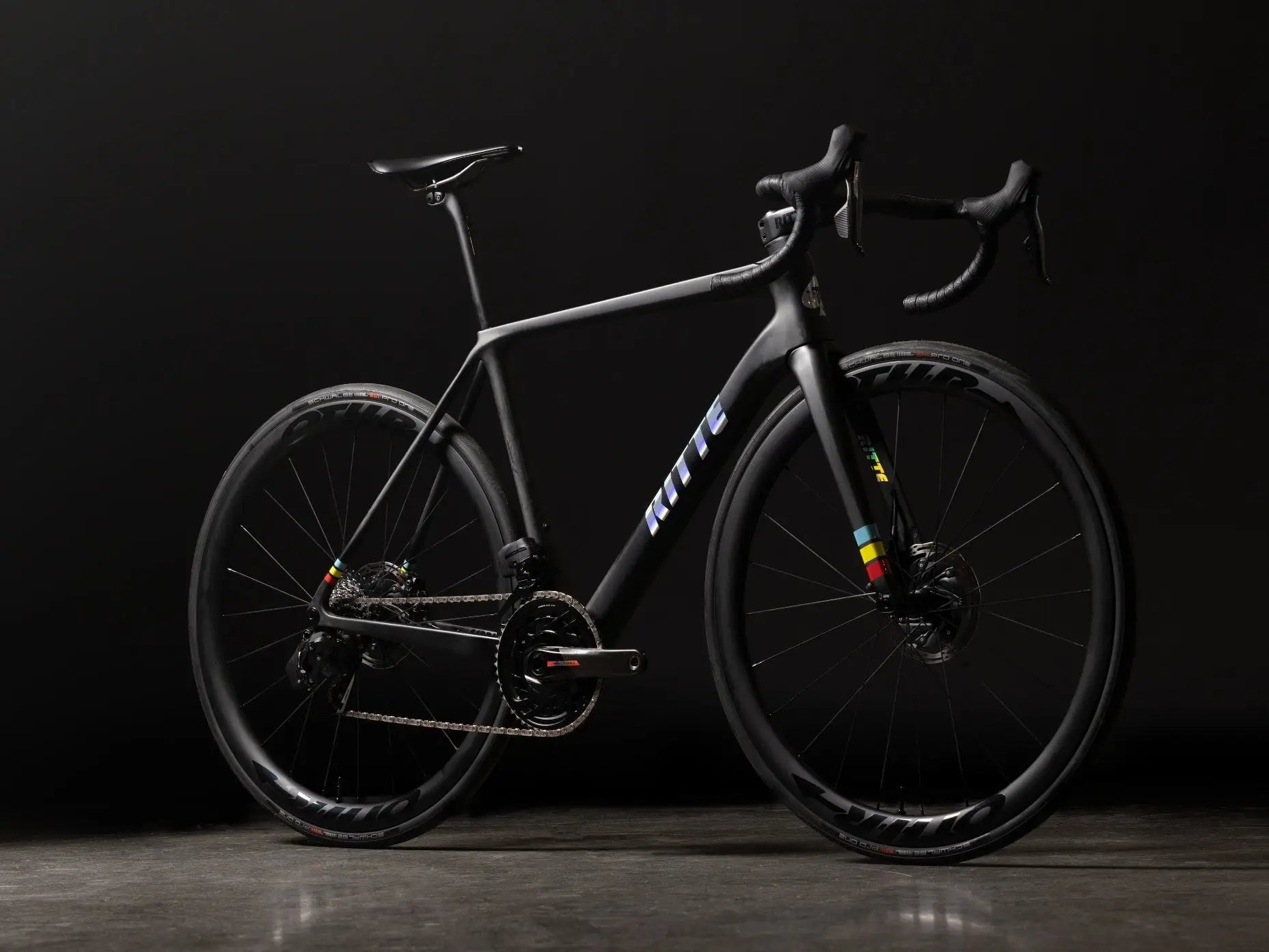WHY WE DON’T FIXATE ON WEIGHTS
You’ve probably come to realize by now that we’re not as fixated on gram counting as many performance brands. We rarely post weights in our Instagram captions, we rarely guide our builds with weight as a defining parameter, and if you’ve ever interacted with us you’ve probably found our approach to the scale a bit different than others.
That’s where the sweet spot comes in. Just like our approach to geometry (weight balance above all else) we take a balanced approach to weight. It goes without saying that overly heavy bikes ride sluggishly. But what most folks in our little niche will fail to tell you is that lighter isn’t always better. Often, too light is terrible. And often people shave weight in areas they can’t perceive or in areas that prove to be a terrible value.
Here we go again, talking about “ride quality.” But it matters - not in the 5 minute ‘round the block test ride at the local shop but most certainly on a 100k mountain ride or a 100mi training route. So we just told you everything you’ve heard about weight is wrong, but what is right?
When we look at a frame, we’re looking to get the characteristics we want out of it first and foremost. It’s got to accelerate efficiently, to steer precisely, to corner intently, to work with the rider rather than against them. Regardless of material there is a weight range in which those objectives can be achieved. Outside the range and you’ll make big compromises. Frames built too light will often be flexy, sluggish, chattery, and vague. Frames that are too heavy (aka too much material) will often ride in a manner that is harsh, lifeless, and flat. It’s the ideal blend of characteristics that actually dictates the weight of our bikes.
But the frame is only one part of the equation - bikes aren’t static, they’re dynamic, and we have to take into account all of the components. With drop bar bikes we mostly avoid the difficulties of sprung versus unsprung weight that mountain bikes have to contend with. Instead, we focus on swing weight, rotational weight, and center of gravity. Those are what will make a bike feel good on the road when it’s moving.

Our bikes already feel pretty light due to a lower center of gravity than many. A slightly lower bottom bracket keeps you low. Low mount water bottle cage positions do the same, dropping the bottles as low as possible on the frame. After all, the weight of two full 22oz water bottles is more than the weight of most modern carbon road frames. And those become swing weight when you’re out of the saddle!
So naturally, we should talk about the swing weight of the highest point on the bike - the saddle. Your saddle itself probably isn’t that heavy, we generally select relatively light saddles and relatively light seatposts. This keeps the swing weight lower when you’re climbing out of the saddle. A 100g difference at the bottom bracket may not be perceptible, but 100g out at the saddle…makes a difference that you can feel!
Wheels and tires are among the most frequently debated weight items for a reason, they’re easy to compare and the difference can be felt. You’ll notice most of the carbon wheels we spec are light yet stiff options, sub 1400g in most cases. Going too much lighter results in the same trouble you get with super light frames - either a jarring ride quality or a lot of wasted power transmission due to flex.
It’s an ideology that is also easy to understand with tires. We pair those above mentioned wheels (like an Enve SES 3.4 or an OTHR Anywhr 40) with reasonably light tires. What good is a light wheel shod in flat resistant, triple casing tires? Even the best of wheels will ride poorly in that configuration. While at the same time, you’re not choosing TT tires for your everyday riding - they’re too fragile for a very slight gain.
So now you’re thinking, “Do I even care how much a bike weighs?” Well, you probably should - but don’t just clamor to get the lightest option. Look for the one that’s going to suit all of your needs and ride the way you want - it should still be pretty light. For most of us, the bleeding edge option isn’t going to actually ride and respond the way we want as an individual part or as part of a system. But a well considered package, one that makes it a pleasure to ride as long as you’re able, that’s what we’re after.
The Esprit, for example, comes in at 790g in the black carbon finish in a size Medium frame. There are some sub-600g frames out there and there are some 1000g+ frames out there. For us, 790g is right where we want it to be - the goldilocks of weights. We built the Esprit to meet a number of performance metrics and ride feel criteria, the weight is low as a result of achieving those but it’s not the guiding factor.
The Esprit has better power transfer, more direct handling, and better durability than the lightest of the light but a livelier ride than frames on the heavier end of the spectrum. You can ride it all day and it’s not giving up anything. That’s the sweet spot.




